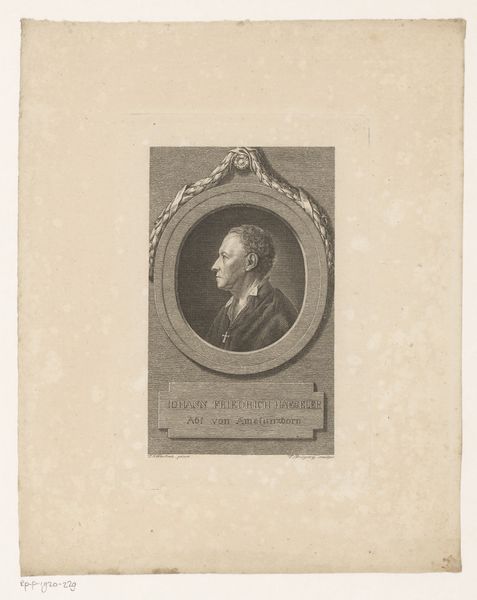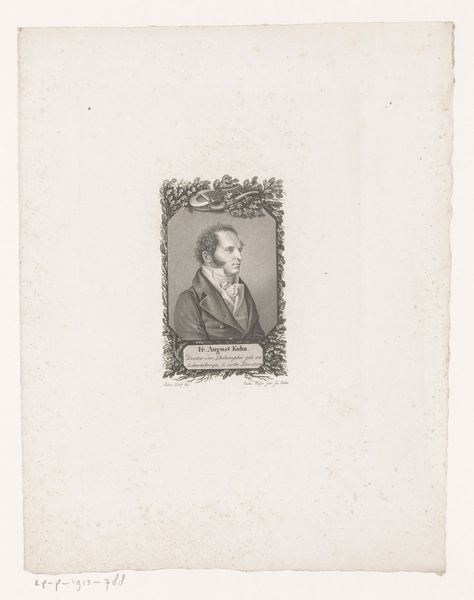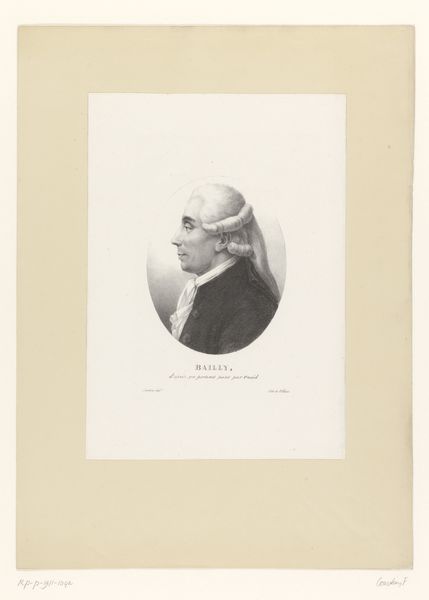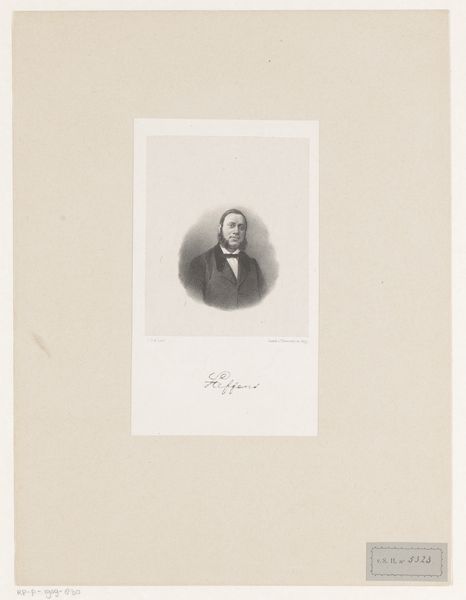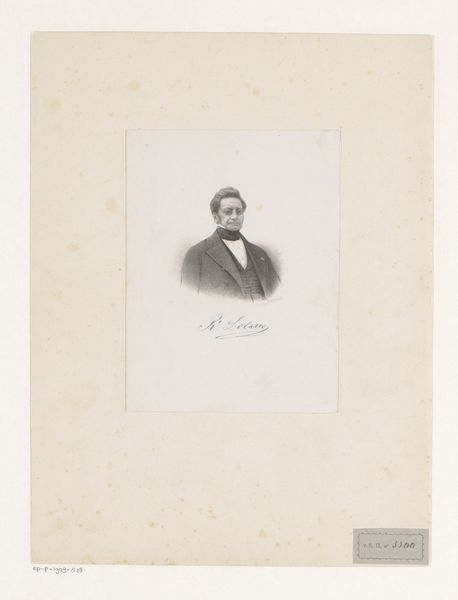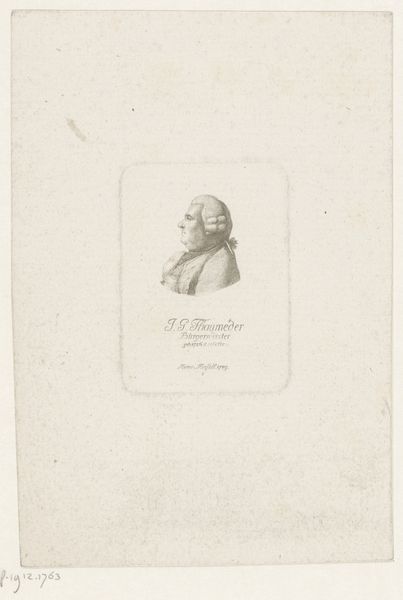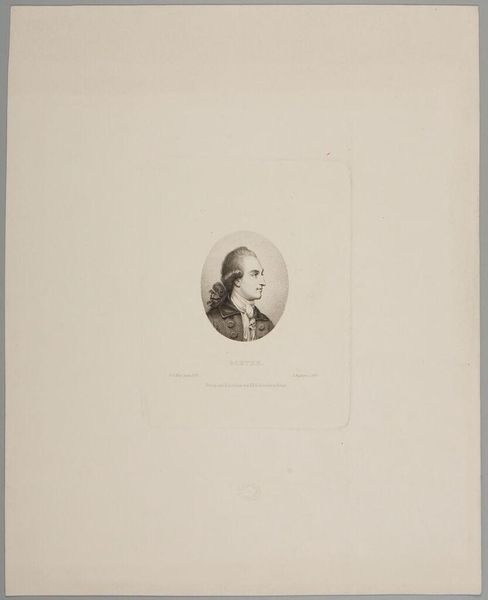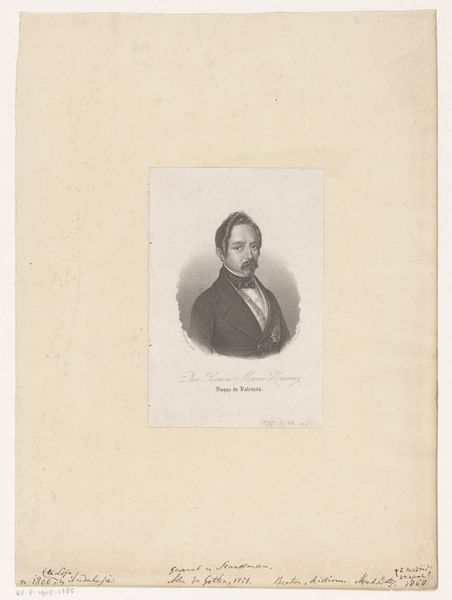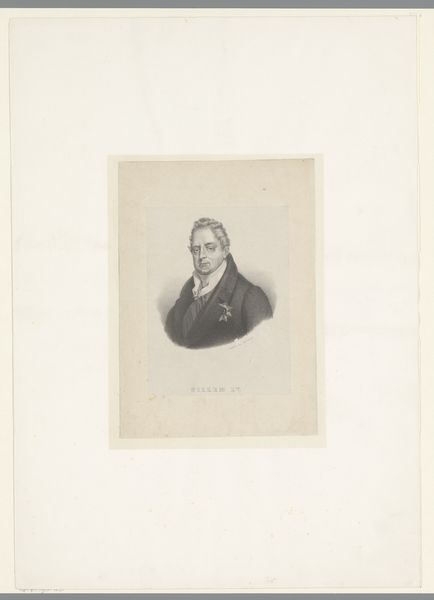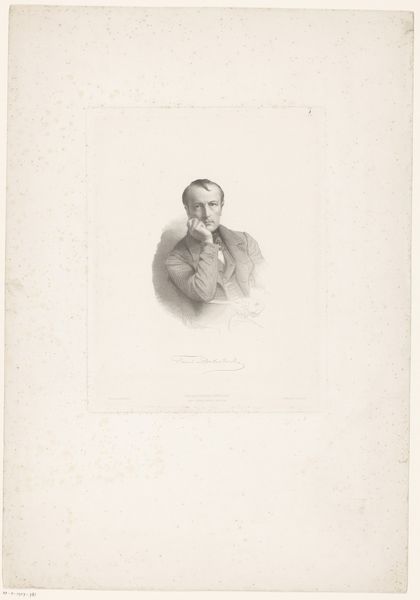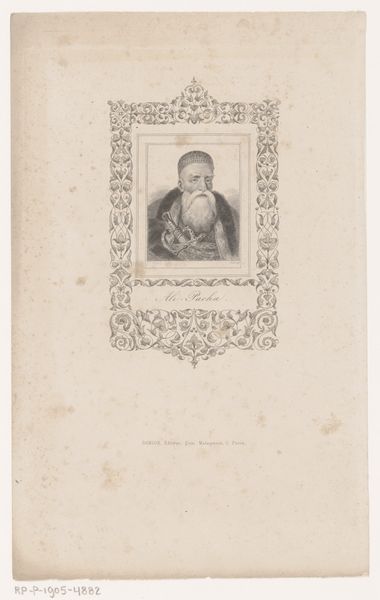
print, paper, engraving
#
portrait
#
ink paper printed
# print
#
old engraving style
#
paper
#
history-painting
#
engraving
Dimensions: height 495 mm, width 320 mm
Copyright: Rijks Museum: Open Domain
Curator: Here we have a print dating from 1822 to 1845, titled "Portret van Paus Gregorius XVI," housed right here at the Rijksmuseum. It's an engraving on paper, depicting Pope Gregory XVI. Editor: My first impression is one of understated power. The sheer negative space surrounding the portrait gives it a feeling of isolation, almost like the weight of the papacy is bearing down on him, visually represented by the blank expanse. Curator: Indeed. Consider the social context in which this image was made. Printed portraits like these circulated widely. The papacy, especially during Gregory XVI's reign, faced numerous challenges, from rising nationalism to calls for reform. An accessible, reproducible image of the Pope served a very real political function. Editor: I see that, a form of symbolic representation, a way to familiarize and possibly control his image across diverse audiences. It is intriguing how the engraving process allows for mass production and broad consumption, thus shaping public perception. Can you tell me about the material process? Curator: The engraving itself is exquisitely detailed, look at the precision of the lines, a direct response to the demands for accurate and aesthetically pleasing likenesses. The materiality of paper and ink made such imagery far more readily available than, say, an oil painting accessible only to the elite. The act of printing also speaks to a democratization of imagery, in a sense. Editor: That really emphasizes the socio-political undercurrents influencing both the creation and consumption. Knowing that, this print embodies the tension between the pontiff's spiritual authority and the limitations of his earthly reach, perfectly framed by the visual mechanics of production and distribution in the early 19th century. Curator: Exactly! I would add that images like this are interesting points of study. They become artifacts that reveal power relations in the era when print began transforming societies. Editor: A surprisingly intricate and layered narrative contained in a small, unassuming print on paper. Curator: A simple object embodying a world of meaning, ready for anyone to decipher.
Comments
No comments
Be the first to comment and join the conversation on the ultimate creative platform.

